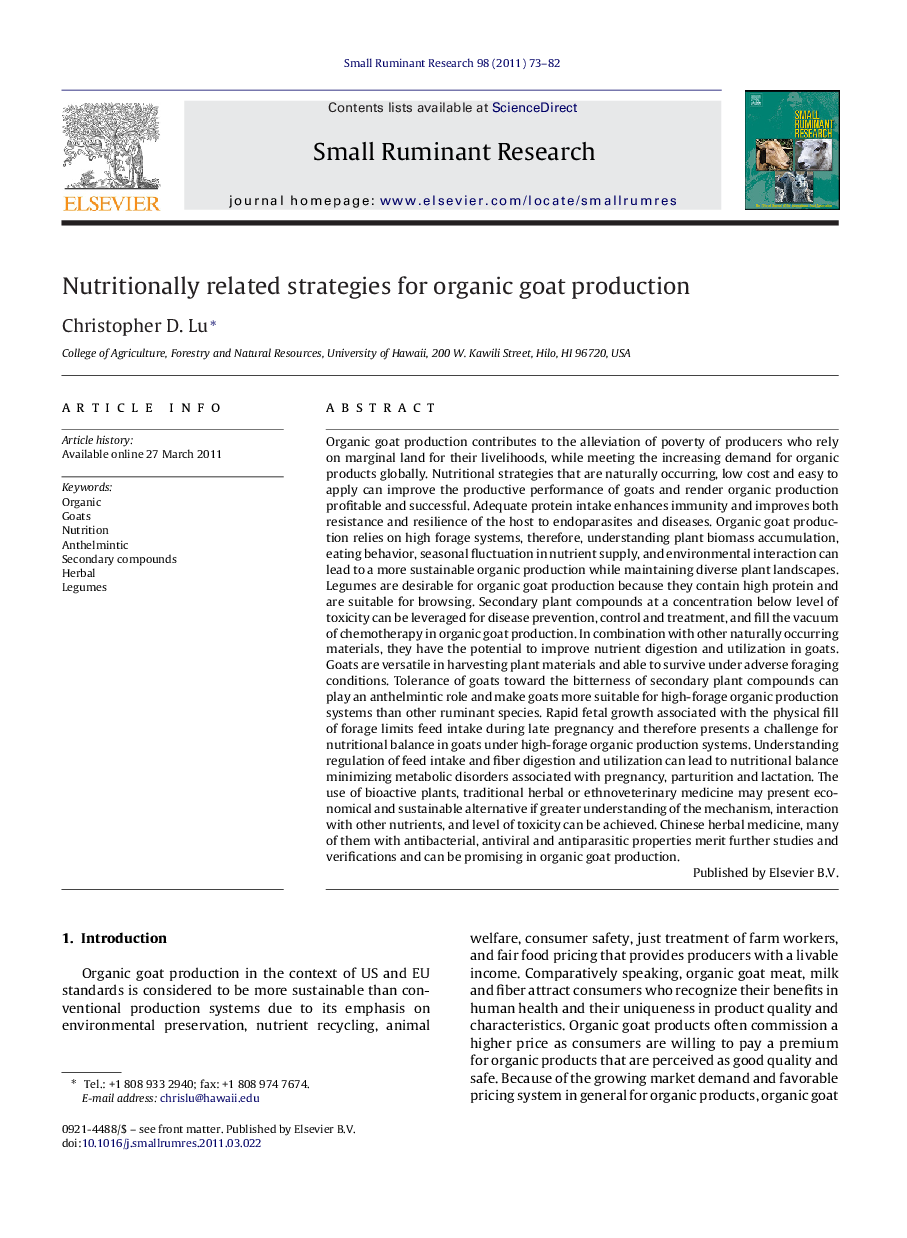| Article ID | Journal | Published Year | Pages | File Type |
|---|---|---|---|---|
| 5796486 | Small Ruminant Research | 2011 | 10 Pages |
Organic goat production contributes to the alleviation of poverty of producers who rely on marginal land for their livelihoods, while meeting the increasing demand for organic products globally. Nutritional strategies that are naturally occurring, low cost and easy to apply can improve the productive performance of goats and render organic production profitable and successful. Adequate protein intake enhances immunity and improves both resistance and resilience of the host to endoparasites and diseases. Organic goat production relies on high forage systems, therefore, understanding plant biomass accumulation, eating behavior, seasonal fluctuation in nutrient supply, and environmental interaction can lead to a more sustainable organic production while maintaining diverse plant landscapes. Legumes are desirable for organic goat production because they contain high protein and are suitable for browsing. Secondary plant compounds at a concentration below level of toxicity can be leveraged for disease prevention, control and treatment, and fill the vacuum of chemotherapy in organic goat production. In combination with other naturally occurring materials, they have the potential to improve nutrient digestion and utilization in goats. Goats are versatile in harvesting plant materials and able to survive under adverse foraging conditions. Tolerance of goats toward the bitterness of secondary plant compounds can play an anthelmintic role and make goats more suitable for high-forage organic production systems than other ruminant species. Rapid fetal growth associated with the physical fill of forage limits feed intake during late pregnancy and therefore presents a challenge for nutritional balance in goats under high-forage organic production systems. Understanding regulation of feed intake and fiber digestion and utilization can lead to nutritional balance minimizing metabolic disorders associated with pregnancy, parturition and lactation. The use of bioactive plants, traditional herbal or ethnoveterinary medicine may present economical and sustainable alternative if greater understanding of the mechanism, interaction with other nutrients, and level of toxicity can be achieved. Chinese herbal medicine, many of them with antibacterial, antiviral and antiparasitic properties merit further studies and verifications and can be promising in organic goat production.
